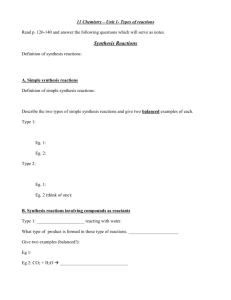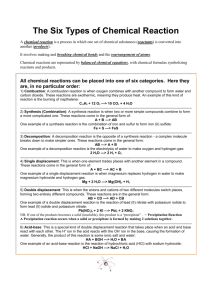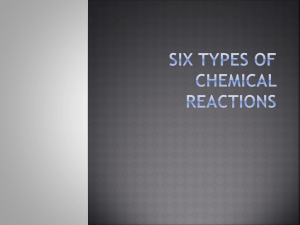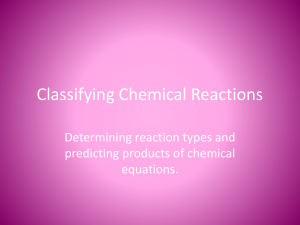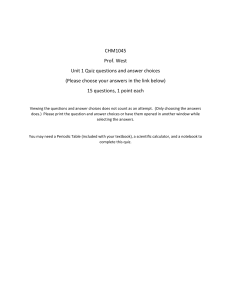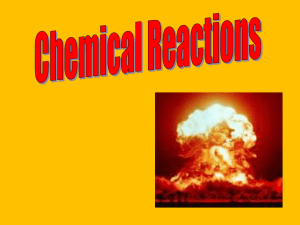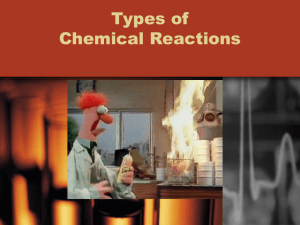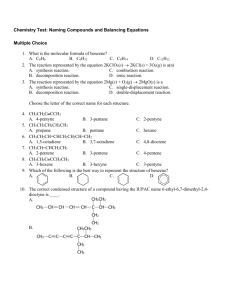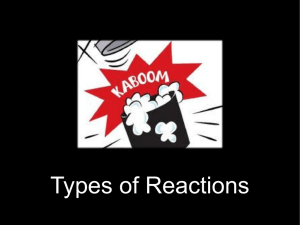Classifying Reactions Notes
advertisement
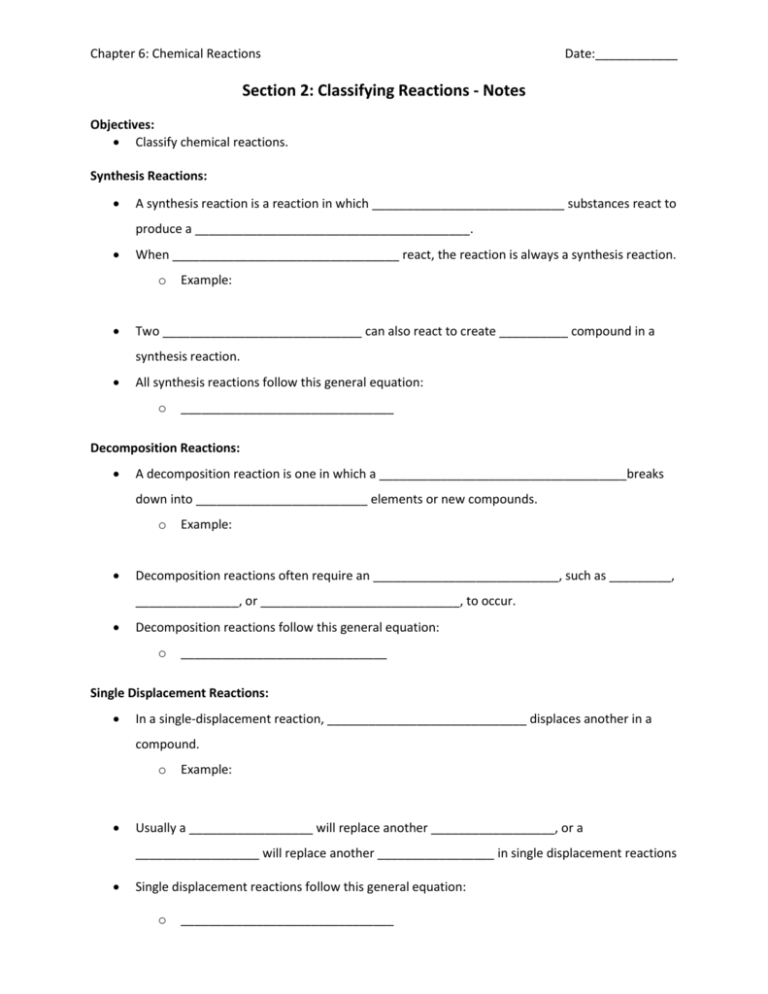
Chapter 6: Chemical Reactions Date:____________ Section 2: Classifying Reactions - Notes Objectives: Classify chemical reactions. Synthesis Reactions: A synthesis reaction is a reaction in which ____________________________ substances react to produce a ________________________________________. When _________________________________ react, the reaction is always a synthesis reaction. o Example: Two _____________________________ can also react to create __________ compound in a synthesis reaction. All synthesis reactions follow this general equation: o _______________________________ Decomposition Reactions: A decomposition reaction is one in which a ____________________________________breaks down into _________________________ elements or new compounds. o Example: Decomposition reactions often require an ___________________________, such as _________, _______________, or _____________________________, to occur. Decomposition reactions follow this general equation: o ______________________________ Single Displacement Reactions: In a single-displacement reaction, _____________________________ displaces another in a compound. o Example: Usually a __________________ will replace another __________________, or a __________________ will replace another _________________ in single displacement reactions Single displacement reactions follow this general equation: o _______________________________ Double Displacement Reactions: Double displacement reactions occur when __________ exchange between two compounds. o Example: Double displacement reactions will always produce either a _____________________________, ________________, or a ___________. A double-displacement reaction follows the general form o _____________________________________ Practice: Classify the following reactions: Na2O(s) + H2O(l) ⟶ 2 NaOH(aq) Ba(NO3)2(aq) + K2SO4(aq) ⟶ BaSO4(s) + 2 KNO3(aq) 2 Al(s) + Fe2O3(s) ⟶ Al2O3(s) + 2 Fe(l) 2 H2O2(aq) ⟶ 2 H2O(l) + O2(g) Solid calcium reacts with chlorine gas to produce solid calcium chloride. Practice: Write a balanced chemical equation for each synthesis reaction: Ag(s) + Br2(g) Mg(s) + Cl2(g) Practice: Write a balanced chemical equation for each decomposition reaction: Al2O3(s) H2O(l)
